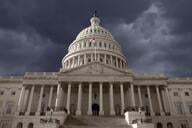You have /5 articles left.
Sign up for a free account or log in.
Public colleges and universities have traditionally received state support in an effort to subsidize the cost of education for residents of the state at an affordable level of tuition. Across much of the nation, educational appropriations per full-time-equivalent student declined during the Great Recession and currently remain well below the pre-2008 level, measured in constant adjusted 2018 dollars. As enrollments continued to grow through 2013 and state support did not keep pace, state universities then generally adapted to this drastic funding reduction through raising tuition -- and thus securing more tuition revenue.
To complicate matters further, recent demographic shifts have significantly reduced the traditional college-age population in many states, resulting in a contrasting trend: general enrollment declines at certain regional state universities in many parts of the country. This reality has caused a new set of concerns among elected officials in the impacted states. In thinly populated areas, the very survival of some regional public universities has been cast in doubt. State legislators with public universities in their districts have become concerned about the employment and economic impact of potential failure of these long-standing institutions of higher learning and have made it clear that such failures are not an option.
As a result, some states are shifting their focus on providing appropriations based on university enrollments to supporting those institutions at risk. This is occurring at a time of elevated concerns among policy makers and the public about how to increase the number of students who are graduating from college. Attempts to improve retention and graduation of existing students have prompted colleges and universities to hire additional personnel to address the wide array of challenges that students who are currently pursuing degrees face. Meanwhile, many higher education institutions are scrambling to cover costs in response to the loss of revenue associated with reduced state appropriations. Not surprisingly, a number of colleges and universities throughout the United States have turned to tuition increases to do so, which has contributed to the student debt crisis and created affordability challenges for students.
As the cycle manifests itself, such conflicting goals create a dilemma for public higher education boards expecting better educational outcomes and wanting to keep public higher education affordable. These same boards must also wrestle with the demands of elected officials to support struggling universities that are the economic engines of their communities. States have had to grapple with pressures to increase subsidies to institutions that are losing tuition revenue due to enrollment declines, as well as to halt the upward movement of tuition at other institutions. Inevitably, state appropriations that were originally intended to subsidize higher education based on enrollment are redeployed to prop up colleges and universities that have become financially failing institutions. That shifts the purpose of the funding from education subsidies that help more students enroll and get their degrees to pure economic subsidies that are focused on saving jobs rather than educating students.
Presenting the dilemma in this manner suggests a straightforward course of action. Many states offer subsidies or tax breaks to businesses and firms that are considered too important to be allowed to fail, based on the premise that this support will preserve jobs, both directly and indirectly, and hence declines in income and state tax revenue will be prevented. If the failing firm being subsidized happened to be a steel mill or auto factory, states would find other sources of funding to attempt to save jobs.
Similarly, legislatures should recognize the dilemma being created by forcing funds intended for support of public higher education to be reallocated to preserve at-risk employers that just happen to be universities. In other words, state economic development funding could be appropriated to support the failing firm (the university), preventing the loss of income and tax revenue for the state and preserving the funding intended to support public higher education. Whether this would be accomplished by reallocation from another economic development program or through a tax increase would be determined by the Legislature. A different application of the same principle is the massive amounts of tax revenue that officials all over the country were willing to forgo to entice Amazon to locate its new headquarters in their state.
Our nation, composed of countless students working diligently to create better lives for themselves and their families, would truly benefit from a refocused perspective on state appropriation. It is time to define a better way. As vital economic and intellectual engines, America’s public universities, and the numerous students they are committed to serve, deserve absolutely nothing less.




